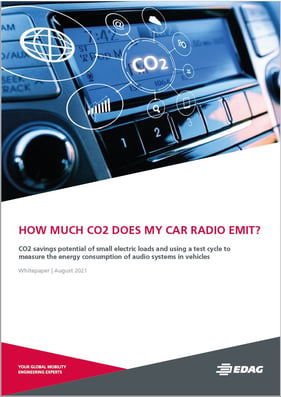Audio systems in the car are becoming increasingly important

While customers are willing to spend increasing amounts of money on special extras with loudspeakers and amplifiers, and their quality requirements are on the rise, more and more functions are are at the same time being transferred to the audio systems by the developers. Apart from the classic radio and media functions, voice assistants, e-Call, telephone functions, warning signals and in-car communication functions are continually finding their way into the vehicle. All of them, of course, crystal-clear, at the right moment, always available, and if necessary very loud!The quantities these small electrical consumers - audio systems for instance - consume is compared with that of the electric drivetrain. It quickly becomes evident that even adjustments to small adjusting screws could reduce fleet consumption by many thousand tonnes a year.
How do audio systems affect energy consumption?
The model-based test cycle Automotive Audio Energy Efficiency Test Cycle (AAEETC) is presented as a standardised, informative means of measuring the electric consumption of audio systems in vehicles. The numerous and complex functions the system provides and the various user practices that exist are taken into account during the test process. The knowledge gained is then used to re-assess the target conflicts and opportunities for optimisation in existing and future projects.
Register now to download the free white paper "How much CO2 does my car radio emit?" and find out more about CO2 savings potential for vehicle audio systems and the presentation of a test cycle to investigate energy consumption.